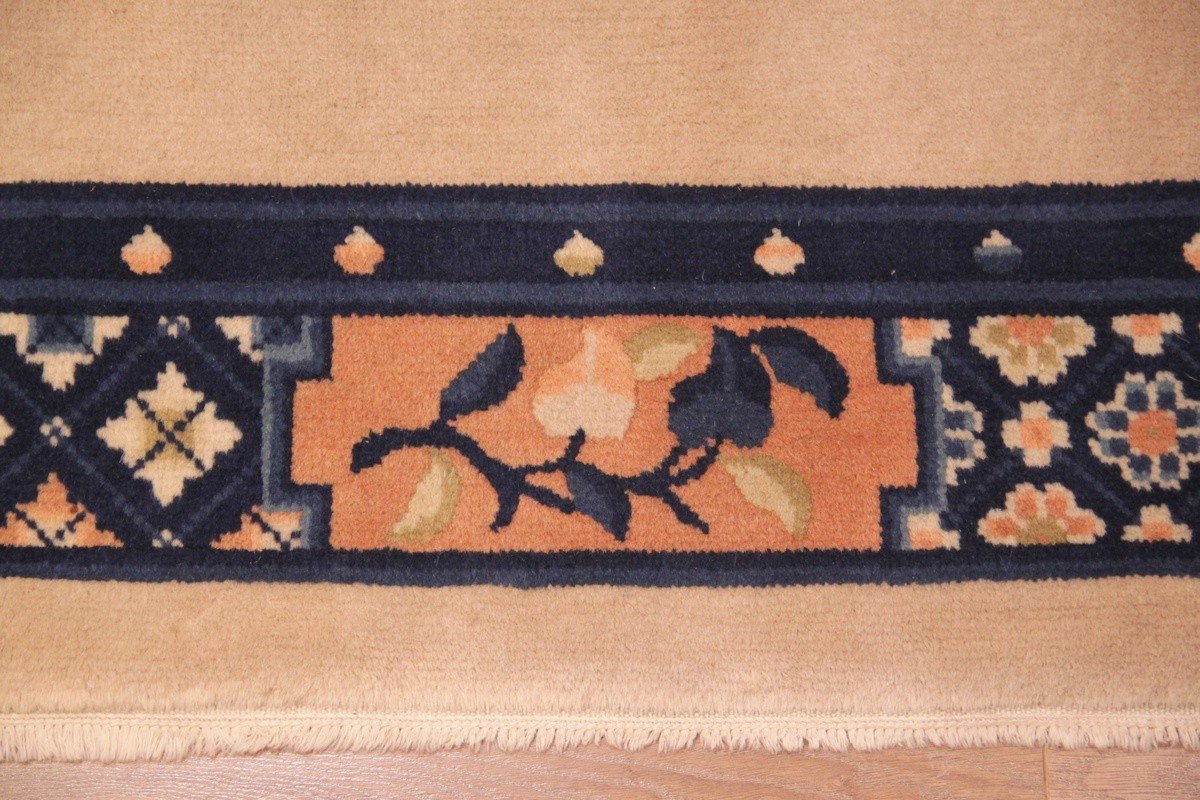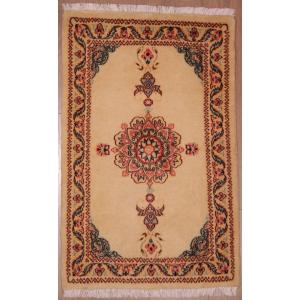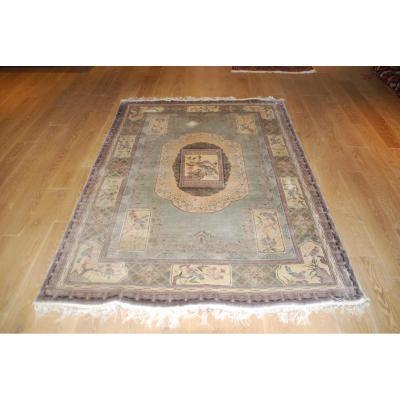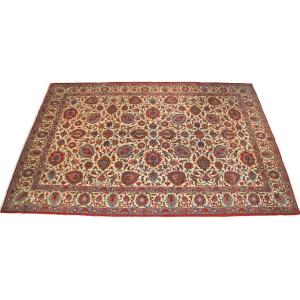City of Inner Mongolia, located on the left bank of the Yellow River (Huang He: 5164 km). The art of weaving Baotou (Paotou) carpets began at the beginning of the 19th century. The majority of Baotou carpets from the end of the 19th and the beginning of the 20th century are generally on a blue background, more rarely on a red background, which distinguishes them from other Chinese carpets. We most often find themes of landscapes, clouds, floral motifs, animals, imaginary animals such as the phoenix or the Fo dog, but also, human representations and interior scenes.
Harmonious pictorial composition for this sober and elegant Baotou called "scholar's carpet". On a plain ivory field, a traditional interior scene represents scholar's objects as well as vases and plants.
On the left, a bouquet of foliage and a peony (symbols of well-being and happiness) blooms in a vase on a base. On the right, a lotus (symbols of purity, fertility and perfection) is also in a vase on a base.
Various objects complete this scene: calligraphy brushes, coins (symbols of wealth and prosperity), scrolls, books and a chessboard.
A frieze, available in different patterns, frames this soothing scene. In the four corners is the "endless knot" motif (symbol of a long, peaceful life).
Free delivery by Chronopost for France and Europe. Do not hesitate to contact us by phone or email. (We ship our rugs and kilims by Chronopost or Colissimo, at our expense (up to 30 kg) in mainland France and Europe).


























 Le Magazine de PROANTIC
Le Magazine de PROANTIC TRÉSORS Magazine
TRÉSORS Magazine Rivista Artiquariato
Rivista Artiquariato
